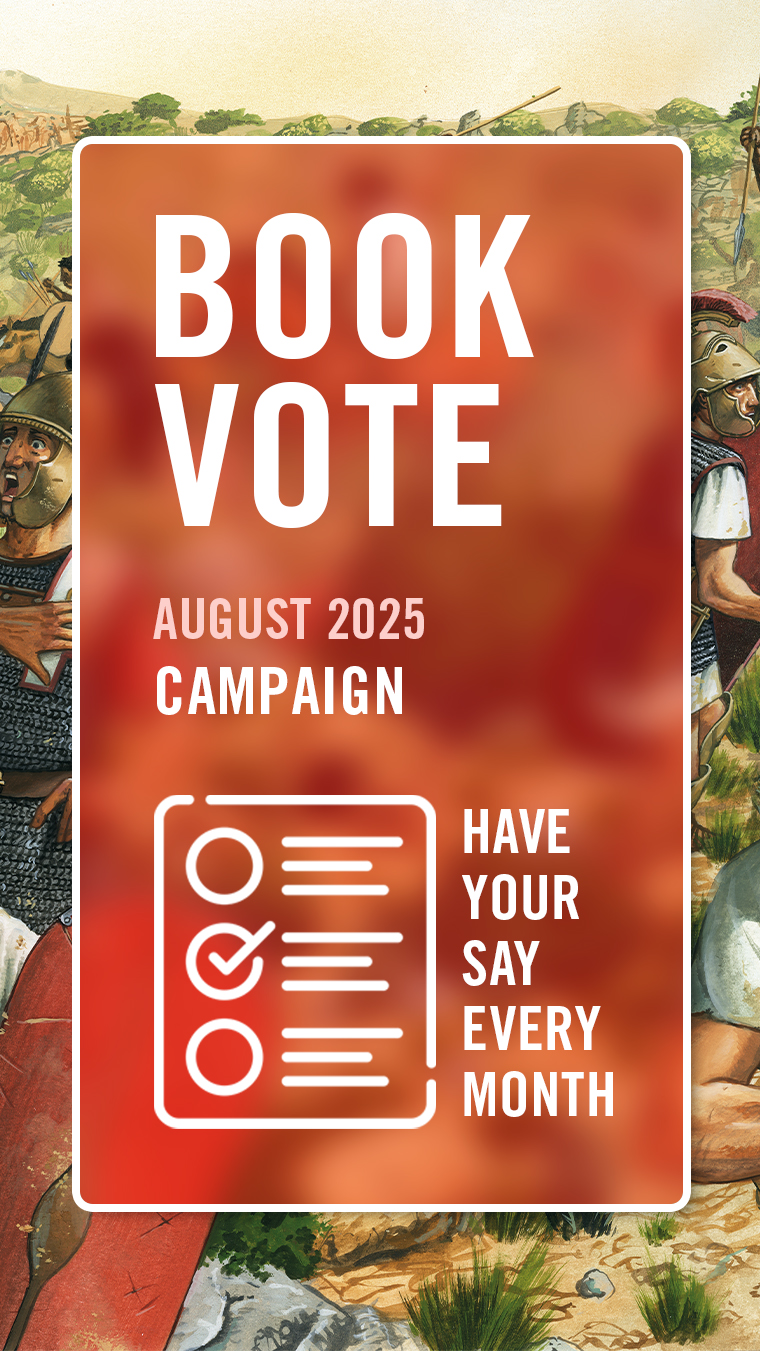
This month's book vote sees five Campaign titles battling for your support. Read the full descriptions and have your say by visiting the Book Vote page. Plus, check out the results of last month's Air Campaign vote.
Vienna 1529: The Ottomans’ First Siege Attempt
First Maroon War 1728–40: Bush Fighting in Jamaica’s Mountainous Interior
Ayacucho 1824: The Decline of Spanish Influence in South America
Madrid 1936: The Nationalist Siege of Spain’s Capital
Wuhan 1938: The Bloodiest Battle of the Second Sino-Japanese War
Vienna 1529: The Ottomans’ First Siege Attempt
Following King Louis II’s death in 1526, the kingdom of Hungary had selected two successors: Archduke Ferdinand I of Austria and John Zápolya. As Ferdinand extended his control of the country, Zápolya sought help from the Ottoman Empire. As such, Suleiman the Magnificent led a force of 100,000 men and attacked Vienna. The siege lasted two weeks and resulted in an Ottoman failure. This was the start of 150 years of bitter tension between the Ottomans and the Habsburgs and ultimately led to a second attack on Vienna in 1683.
First Maroon War 1728–40: Bush Fighting in Jamaica’s Mountainous Interior
By the early 18th century, Jamaica had become the most important colony in the British West Indies. The cultivation of sugar cane on plantations led to the development of an economy dependent on enslaved people imported from Africa, alongside the enslaved Creole population. However, the colonial authorities would soon be faced with resistance of some communities of enslaved people known as the Maroons, who fled into the mountainous and thickly forested interior of Jamaica from where they waged a guerrilla campaign. The authorities attempted to suppress the Maroons, hunting individuals and their encampments. When this failed, peace treaties were reached between the Maroons and the British.
Ayacucho 1824: The Decline of Spanish Influence in South America
Thanks to Peru’s mineral wealth, Spain had kept tight control over that area. However, by 1823, the political situation in Spain had caused dissention in its Peruvian army. Patriot leader Simón Bolivar used this dissention to lead an offensive in August 1824. Bolivar then delegated command to Antonio José de Sucre, who would lead the Patriot forces against the Loyalists at Ayacucho. Both sides were evenly matched in men and armament, but the Patriots managed to overwhelm the Loyalist flank with their counterattack, leading to the surrender of the Spanish forces. This victory not only served as the culmination of the independence movement in Peru but also signified the end of Spanish control across the continent.
Madrid 1936: The Nationalist Siege of Spain’s Capital
After the start of the Spanish Civil War, the Republican forces managed to hold onto Madrid, putting down Nationalist rebellions in the city. In November 1936, other Nationalist forces led by Francisco Franco had managed to make it to Madrid and began to besiege the city. However, the Nationalists, while better equipped, were outnumbered and they were unable to fully surround Madrid to cut it off completely. This resulted in a two-and-a-half-year long siege of the city, with the Nationalists finally securing victory after the north and Catalonia had been conquered and in-fighting had weakened the Republican leadership.
Wuhan 1938: The Bloodiest Battle of the Second Sino-Japanese War
Following the Imperial Japanese Army (IJA) invasion of China in 1937 and the fall of several major cities, the bulk of the Nationalist agencies and commands were in Wuhan. The Chinese then focused on protecting Wuhan from the IJA, who had expected Wuhan to fall quite quickly. However, the continued fighting in and around the city caused a high death toll for both sides, and while it ended with a Japanese victory, the Chinese were able to move forces and equipment further inland to continue their war of resistance.
Last month, we asked what you would like to see published in our Air Campaign series. Thank you to everyone who voted and provided feedback. Here are the results:
Third Army 1944–45: Patton’s tactical air power – 16%
Atlantic 1939–44: Condors against the convoys – 28%
Baedeker Blitz 1942: Germany’s first vengeance campaign – 15%
Quick Reaction Alert 1945–91: The RAF’s Cold War interceptors – 21%
Home Islands 1945: The British Pacific Fleet hits Japan – 21%

Comments
You must be logged in to comment on this post. Click here to log in.
Submit your comment